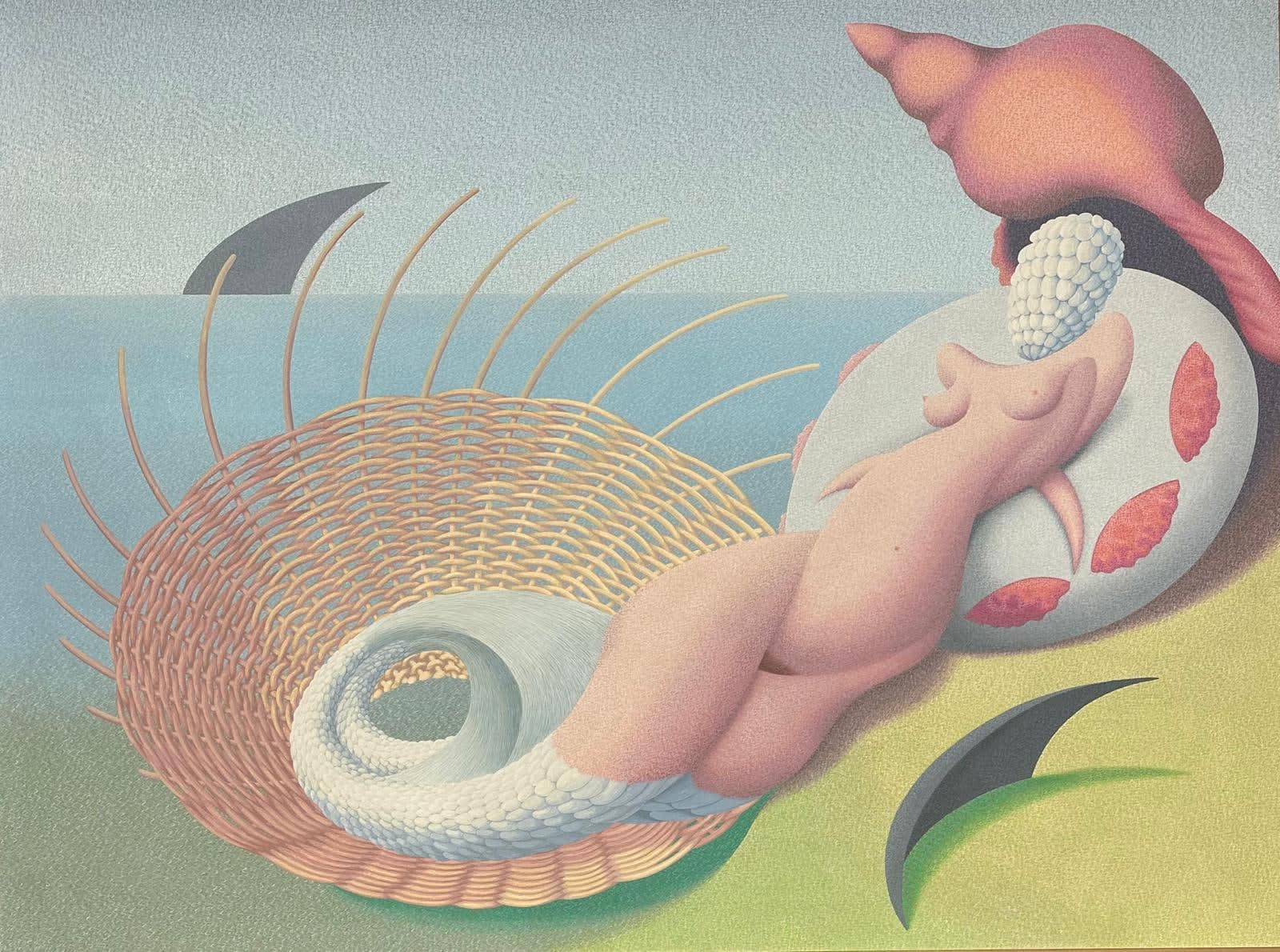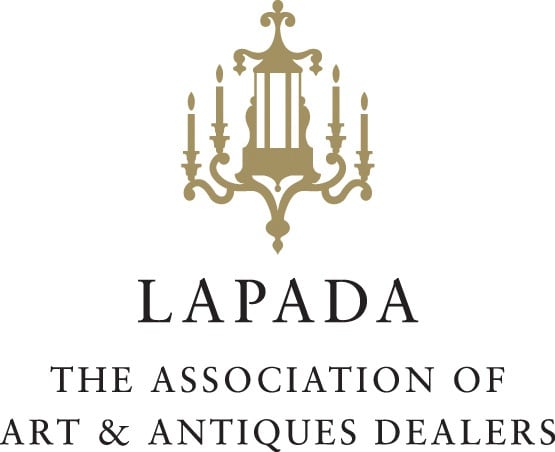-
Artworks
Henry Orlik b. 1947
BEAUTY AND SHARKSAcrylic on canvasImage H. 81 cm. x W. 106.5 cm., H. 32 in. x W. 42 in.
Framed: H. 93 x W. 118 cm., H. 36 1/2 in. x W. 46 1/2 in.With artist's stamp versoWB1605Note: If you are interested in acquiring a work by Henry Orlik, please contact our team to discuss further options.Further images
The ‘Beauty’ lies on the shore, her body is human, soft and rounded except she has pincer-like arms (reminiscent of crab or lobster claws) and her flesh legs morph into two white fishtails that coil behind her formed from scales made up of rhythmical rows of white shells or feathers; her head is a mass of white shells formed into a head-shape, as if they are molluscs attached to a rock. Behind her head rests a giant orange-pink conch shell – like the headboard to a bed and one wonders if this is her ‘home’ – which she disappears into at the end of the day. Or perhaps she has been born from the shell, or, like a hermit crab, she has made the shell her own. She reclines on a large round white cushion with orange-red frills around its edge; the cushion appears in Orlik’s painting End of An Affairand one supposes that it represents an actual cushion – a memory from childhood perhaps.
The Beauty’s fore-shortened, almost non-existent arms appear from the back of her body shaped like crab claws, and in the termination of her arms there is a suggestion of the Venus de Milo – a figure incorporated into Dali’s work as a psychological exploration of the mysterious sexual desire symbolised by the ancient goddess of love. She reclines voluptuously and provocatively on a sandy and grassy bank – possibly in the dunes – and behind her lies a calm blue sea. Like Botticelli’s Birth of Venus – she has been born of the sea and the woven basket on which she rests her legs/tails appears like the large scallop shell from which Venus emerges from Botticelli’s Sea. Like Titian’s Venus of Urbino, she appears in control and unperturbed by the sharks, a large fin on the horizon and a smaller fin which rests on the land next to her, almost like it is a mirror in which she is admiring herself, a witness to her charms. The positioning of the two sharks, however, does appear to imprison her, hemming her into the scene, curtailing her movement giving a sense of foreboding which undermines the seemingly benign tableau. As she is confined in the setting by the sharks so she also needs them as her admirers because without them what would she be? The painting questions who is the prey and who is the hunter and suggests that, in fact, they symbiotically feed off each other.
Orlik’s depiction of the ‘Beauty’ as part human, part fish/sea creature raises connotations of the woman as unabashed seductress or enchantress who appears mythologically in stories of Lamia, mermaids and the Melusine. Perhaps, Orlik is again incorporating elements from his mother’s Belarusian heritage. In Slavic folklore, the rusalka is a typically feminine entity, often malicious toward mankind and frequently associated with water, with counterparts in other parts of Europe, such as the French Melusine and the Germanic Nixie. Rusalki appear in a variety of media in popular culture, particularly in Slavic language-speaking countries, where they frequently resemble the mermaid. Such figures have been written about and depicted from ancient times as femme fatale or succubi who seduce men. Here Orlik, by introducing the sharks into his painting, raises the suggestion of the male gaze and what that means for such characterisations.
Note: If you are interested in acquiring a work by Henry Orlik, please contact our team to discuss further options.
Join our mailing list
Be the first to hear about our upcoming exhibitions, events and news
* denotes required fields
We will process the personal data you have supplied to communicate with you in accordance with our Privacy Policy. You can unsubscribe or change your preferences at any time by clicking the link in our emails.










